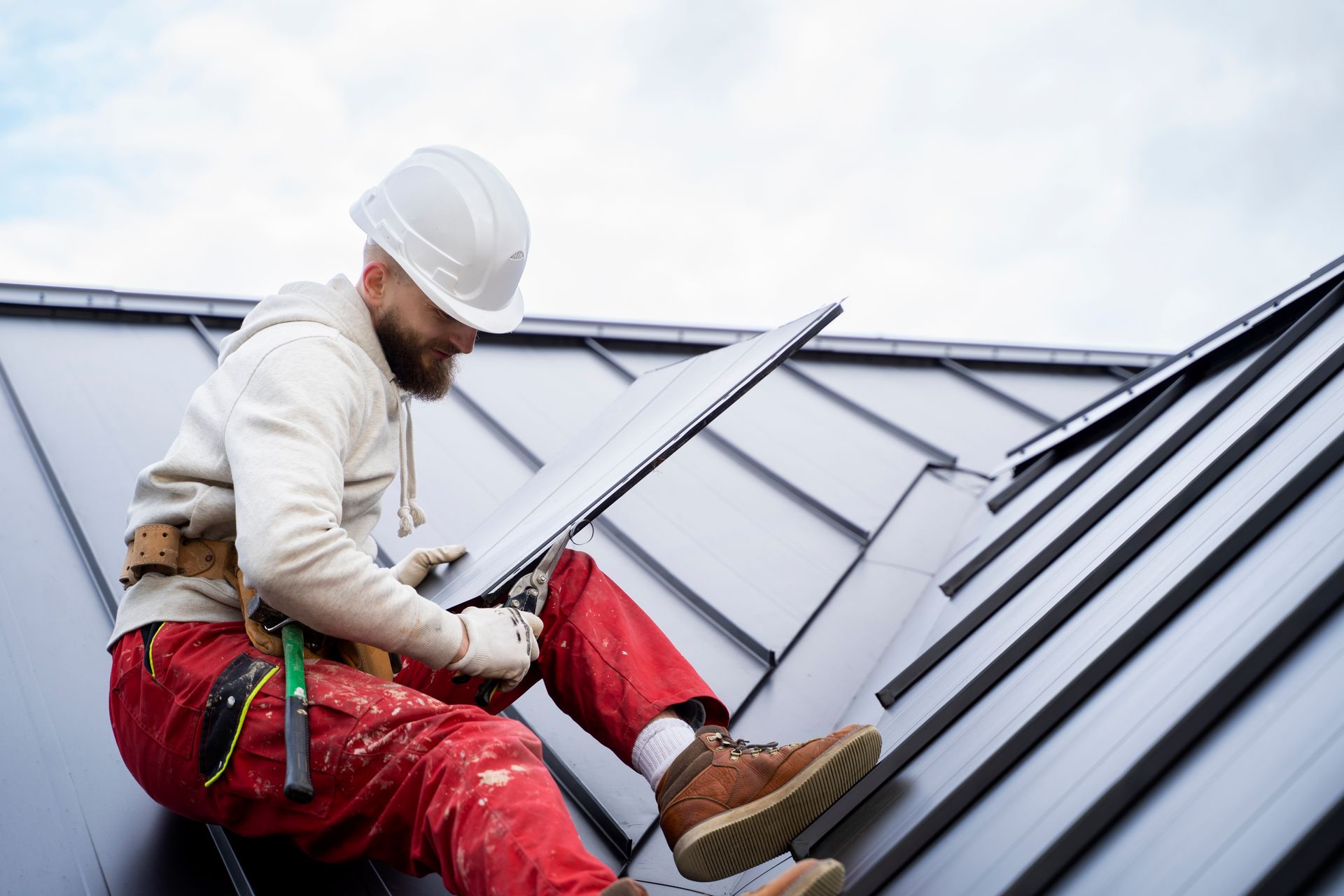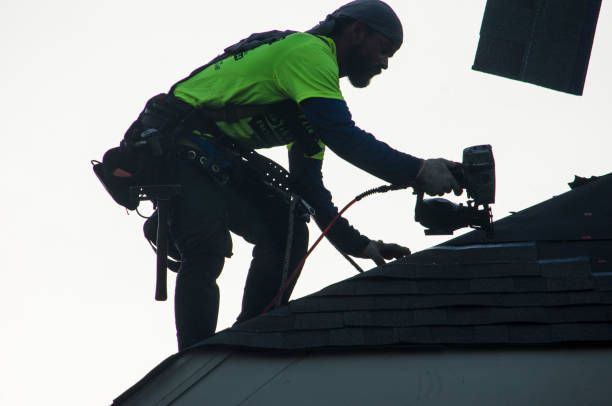Understanding Different Types of Roofing Systems for Homes
Choosing the right roofing system for your home is essential for long-term protection and durability. With various options available, it can be overwhelming to determine which is the best fit for your needs. Different roofing systems offer unique advantages in terms of durability, aesthetics, and energy efficiency. Asphalt shingles, metal roofing, clay tiles, and slate are just a few of the common choices homeowners must consider. Each material comes with its own set of benefits and considerations depending on the climate, budget, and style of your home.
Understanding the different types of
roofing systems allows you to make an informed decision that suits your needs and budget.

Choosing the Right Roofing System for Your Home
Choosing the right roofing system is essential for the protection and longevity of your home. Different roofing systems come with a variety of benefits and considerations, making it important to assess your home’s needs before making a decision. Factors such as climate, budget, and aesthetic preferences play a key role in determining the best roofing option. Asphalt shingles, metal roofs, and tile roofs are popular choices, each offering unique advantages in terms of durability, energy efficiency, and maintenance.
When selecting a roofing system, it's essential to consider how each material stands up to the elements in your area. For example, asphalt shingles are cost-effective and easy to install, while metal roofs are more durable and energy-efficient.
Benefits of Asphalt Shingles for Your Roof
Asphalt shingles are one of the most popular roofing materials due to their affordability and reliability. They come in a variety of styles and colors, making them versatile enough to complement most home styles. Asphalt shingles are easy to install, making them a cost-effective option for homeowners looking to replace their roof without breaking the bank. They are also relatively low-maintenance and can withstand harsh weather conditions, such as rain, wind, and hail.
Despite their affordability, asphalt shingles can have a shorter lifespan than other roofing materials, typically lasting around 20 to 30 years. However, with proper care and regular maintenance, they can offer long-term performance and reliability.
Why Metal Roofing Is a Durable Choice for Homes
Metal roofing is an increasingly popular option for homeowners due to its durability and energy efficiency. Made from materials like steel, aluminum, or copper, metal roofs can last anywhere from 40 to 70 years, far longer than traditional asphalt shingles. Metal roofing is highly resistant to extreme weather conditions, including heavy rain, strong winds, and even fire, providing added protection for your home. Additionally, metal roofs are available in a wide range of styles, from traditional panels to more modern designs that mimic the appearance of other materials like shingles or tiles.
Beyond durability, metal roofing offers excellent energy efficiency. It reflects solar heat, which helps keep your home cooler in the summer and reduces cooling costs.
The Advantages of Tile Roofing for Homes
Tile roofing is a highly durable and aesthetically pleasing option for homeowners seeking a long-lasting and stylish roof. Available in both clay and concrete varieties, tile roofs are well-known for their ability to withstand extreme weather conditions. They are resistant to rot, pests, and fire, and can last anywhere from 50 to 100 years with proper care. Tile roofing is also energy-efficient, as it provides excellent insulation, helping to keep your home cool in the summer and warm in the winter.
The classic appearance of tile roofing adds an element of elegance to your home and can increase its curb appeal. However, tile roofs can be heavier than other materials, requiring additional structural support.
Slate Roofing: A High-End, Long-Term Investment
Slate roofing is one of the most durable and high-end roofing materials available. Known for its natural beauty and exceptional lifespan, slate roofs can last more than 100 years, making them a great long-term investment for homeowners. Slate is highly resistant to fire, wind, and water damage, providing excellent protection against the elements. Its aesthetic appeal, with its unique texture and color variations, makes slate roofing an attractive choice for upscale homes and historic properties.
While slate roofing is incredibly durable, it is also one of the most expensive roofing materials. The cost of slate, combined with its installation requirements, can make it prohibitive for many homeowners.
Exploring Synthetic Roofing Materials
Synthetic roofing materials are becoming more popular as an alternative to traditional roofing systems. Made from a variety of materials, including rubber, plastic, and polymer, synthetic roofing mimics the appearance of wood, slate, or tile but is often more affordable and easier to maintain. Synthetic roofs are designed to be lightweight, durable, and resistant to extreme weather conditions such as heavy rain, snow, and high winds. These roofs also offer increased energy efficiency by providing better insulation and reflecting heat.
One of the major benefits of synthetic roofing is its versatility. Available in a wide range of styles and colors, synthetic materials can replicate the look of expensive roofing options like slate or wood without the high cost.
Wood Shingles and Shakes for a Classic Look
Wood shingles and shakes provide a timeless, natural look that adds charm and character to your home. Made from cedar, redwood, or pine, wood roofing materials offer a distinctive aesthetic that blends well with rustic, cottage, or traditional home designs. Wood roofs are also environmentally friendly, as they are made from renewable resources. When properly maintained, wood shingles and shakes can last for several decades, providing long-term protection for your home.
However, wood roofing materials require more maintenance than other types of roofs. They need to be regularly treated to prevent issues such as rot, mold, and insect infestation.
The Cost-Effectiveness of Asphalt Shingles
Asphalt shingles are a popular and cost-effective roofing material, making them an ideal choice for many homeowners. They are relatively inexpensive compared to other roofing options and are easy to install, reducing labor costs. Asphalt shingles are available in a variety of styles and colors, allowing homeowners to choose an option that complements their home’s aesthetic. Additionally, asphalt shingles are lightweight, making them suitable for a wide range of roof structures.
While asphalt shingles offer affordability, they may have a shorter lifespan compared to more expensive materials like metal or slate. Typically, asphalt shingles last between 15 and 30 years, depending on the quality of the materials and the climate. Despite this, asphalt shingles remain a popular option due to their affordability, ease of installation, and ability to withstand common weather conditions like rain, wind, and hail.
Metal Roofing as a Sustainable Option
Metal roofing is an excellent choice for homeowners looking for a sustainable and durable roofing option. Made from materials like aluminum, steel, or copper, metal roofs are highly energy-efficient and can reduce cooling costs by reflecting heat away from the home. Additionally, metal roofing is fully recyclable, making it an eco-friendly option that reduces waste. With proper care, metal roofs can last between 40 and 70 years, offering exceptional value over time.
Although metal roofing can be more expensive initially compared to asphalt shingles, its durability and energy-saving benefits make it a worthwhile investment. Metal roofs are resistant to extreme weather, including high winds, hail, and fire.
Flat Roofing Systems for Modern Homes
Flat roofing systems are a popular choice for modern homes and commercial buildings due to their sleek appearance and space-efficient design. Typically made from materials such as modified bitumen, EPDM, or TPO, flat roofs offer a contemporary look and can be used as additional living or storage space. They are also easier to install and maintain compared to pitched roofs, making them a cost-effective choice for many homeowners.
One of the challenges of flat roofing is ensuring proper drainage, as water can pool on the surface, leading to leaks and damage. However, modern flat roofing systems are designed with built-in drainage solutions that help prevent water accumulation..
Conclusion
Understanding the different types of roofing systems available for your home is essential for making an informed decision. Whether you're considering asphalt shingles, metal roofing, tile, or other materials, each option offers unique benefits and considerations based on your home’s needs, budget, and climate. By evaluating these factors, you can choose the best roofing system that provides long-lasting protection and enhances the value of your home.
If you're ready to explore roofing options or need professional advice, contact Spring Valley Roofing at (610) 948-5207. Our team of experts can guide you through the selection and installation process, ensuring that your roof is durable, efficient, and suited to your specific needs. Visit us at 1714 Gilbertsville Rd, Pottstown, PA 19464, and let us help you find the ideal roofing solution for your home. We're committed to delivering quality and peace of mind through reliable roofing services.



